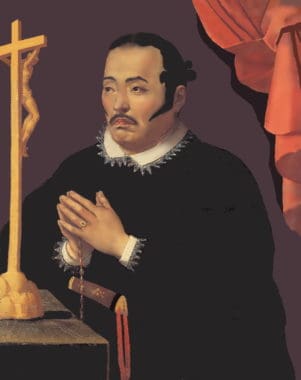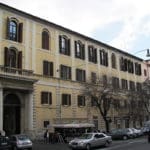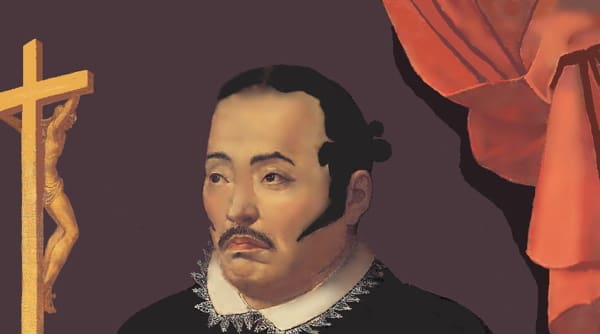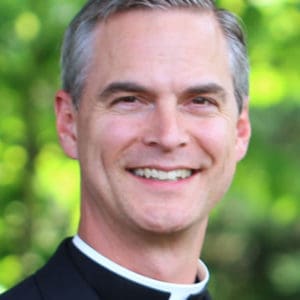Guidance for Assessing the Arts:
The “Silence” Movie
There is a movie coming out of Martin Scorsese called, Silence. It was screened by The Vatican, I think. It is about how the Jesuits were evangelizing Japan, and all the socio-economic and cultural challenges, related to trade etc. occurring at that  time. Since it is about Faith, do you have a resource that analyzes where the priests were in their spiritual journeys with God? Young priests are not the same as older priests. Some older priests could be jaded and others are wise and others do whatever they think is right…A young priest starts out full of emotional zeal for Christ, but once they hit adversity they may change. I am wondering how to watch that film to interpret the meaning. I think in reading about it, the deeper ways of evangelizing is better through action, and maybe that is why the Franciscans have a greater impact, than the intellectual approach of the Jesuit in some places? I think that God works in mysterious ways. When a priest fails and does commit apostasy to save fellow Christians, it’s like the prayers of those persecuted are answered. They have their lives saved; to go on and preach the gospel to others. Since stepping on a cross, may appear to be apostasy, but in reality the priest holds Christ in his body, body and soul. The crucifix is symbol, to help us meditate, but we don’t worship the object. A Christian who cannot wear one’s crucifix is no less a Catholic Christian. I guess that is my spiritual direction question. Is it like the Cloud of the Unknowing book? Is it like Mother Teresa’s Dark Night or John of the Cross’? Thank you.
time. Since it is about Faith, do you have a resource that analyzes where the priests were in their spiritual journeys with God? Young priests are not the same as older priests. Some older priests could be jaded and others are wise and others do whatever they think is right…A young priest starts out full of emotional zeal for Christ, but once they hit adversity they may change. I am wondering how to watch that film to interpret the meaning. I think in reading about it, the deeper ways of evangelizing is better through action, and maybe that is why the Franciscans have a greater impact, than the intellectual approach of the Jesuit in some places? I think that God works in mysterious ways. When a priest fails and does commit apostasy to save fellow Christians, it’s like the prayers of those persecuted are answered. They have their lives saved; to go on and preach the gospel to others. Since stepping on a cross, may appear to be apostasy, but in reality the priest holds Christ in his body, body and soul. The crucifix is symbol, to help us meditate, but we don’t worship the object. A Christian who cannot wear one’s crucifix is no less a Catholic Christian. I guess that is my spiritual direction question. Is it like the Cloud of the Unknowing book? Is it like Mother Teresa’s Dark Night or John of the Cross’? Thank you.
As I have not seen the film, I am afraid my answer may not satisfy you completely. But I do have some thoughts, first in general, then more specific.
Works of Art and Room for Interpretation
I had the grace and joy of being involved in another religious film that came out in 2004, Mel Gibson’s The Passion of the Christ. Many things struck me about that experience (you can read more about it in my book, Inside the Passion). Relevant to your question, however, is one thing in particular. A movie is always a work of art. As such, it reflects and embodies much of the artist’s own experience and worldview. Just think about how many artistic depictions there have been of Christ’s crucifixions. Millions, literally. And no two are exactly the same.
 In the case of a film like this, which attempts to depict historical events, we have to remember that. It is not a documentary put together from eye witnesses. It is an artistic interpretation of events that occurred long ago, many details of which are unknown to us. That’s the first point. We must not see this film, or other films, without a healthy critical eye: we are watching an artist’s rendition, a story, not pure history. And so, even if we enjoy a film, or appreciate certain aspects of a film, we do not have to agree with its message, or assume that the message is true.
In the case of a film like this, which attempts to depict historical events, we have to remember that. It is not a documentary put together from eye witnesses. It is an artistic interpretation of events that occurred long ago, many details of which are unknown to us. That’s the first point. We must not see this film, or other films, without a healthy critical eye: we are watching an artist’s rendition, a story, not pure history. And so, even if we enjoy a film, or appreciate certain aspects of a film, we do not have to agree with its message, or assume that the message is true.
But it gets a bit more complicated. Since the film does deal with historical events, it can represent those events themselves more or less truthfully. Martin Scorsese’s earlier film, The Last Temptation of Christ, took extreme liberties with the historical knowledge we have about Christ’s life, death, and teaching. Those liberties were such that the film’s message contradicted the truth about Jesus. To make a fair evaluation of this historical accuracy of this new film would require some patient research. Keep that in mind as well.
A Meditation on This Fallen World
To the best of my knowledge, the main source for this new film is a novel of the same title written by the Japanese author Shusako Endo. This adds yet another level of complexity: Endo’s novel is itself a work of literary art, not of pure history. So in Scorsese’s film we have a work of art in film adapted from a work of art in literature. You can see that this leaves a lot of room for inserting messages and points of view that reflect the artists’ own struggles, concerns, or interpretations of moral and religious realities. Having read the novel myself (though, as I mentioned, I have not seen the film), it struck me as a meditation on human weakness, on a fallen world and the moral ambiguities that can cloud such a world, and on God’s tireless mercy. Much like the novels of Graham Greene, the characters in the novel were not presented as heroes to imitate, but humans to empathize with – at least, that was my experience of the book.

Not “Approved” by the Magisterium
And although the film’s premiere did take place in Rome at a pontifical institute which is located on Vatican territory (though not inside Vatican City), we cannot for that reason assume that the film’s historicity and message are therefore approved in some way by the Church’s Magisterium. I imagine that the choice of location stemmed rather from the connection between the Jesuits depicted in the film, who were missionaries in Japan, and the Jesuits who run the Pontifical Oriental Institute, a training center for many missionaries.
Understandable but Not Necessarily Laudable
As for your specific questions, I think there is room for discussion regarding their answers. Works of art often spark discussion, which can be enriching. That said, I will share one other thought.
It can be true that young priests are idealistic and older priests are jaded, though this is certainly not universal. But whether a person is struggling with idealism or cynicism, those feelings need to be identified and put in their proper place; we must make our decisions not based just on feelings, but based first and foremost on moral truth. Just as an idealistic husband has to learn to identify and accept the flaws of his young wife and continue to love her, so a cynical husband has to learn to see the inner beauty and goodness of his wife in order to continue honoring, loving, and revering her as God wants him to. Neither idealism nor cynicism, as understandable as they may be, can excuse sin. And publicly denouncing the divinity of Christ or one’s adherence to him as Lord (which is the action you describe in your question, I think), any way you slice or dice it, is a fault against the first commandment (see #2089 of the Catechism).
Someone’s degree of culpability may certainly be diminished by circumstances like those faced by the characters in Silence. Likewise, individuals may repent of their sins and return to the faith. Only God knows the whole story of each person’s struggles, and only God can accurately judge the level of culpability, even though we all may be able to see the objective evil of a sinful action. This is why Jesus tells us: “Do not judge, or you too will be judged” (Matthew 7:1).
But we must be careful to avoid calling right something that was wrong. Many martyrs in the history of the Church refused to renounce their faith in the face of horrible pressures. It would have been more convenient for them and for others if they had simply renounced their faith in Jesus. And yet, they didn’t. The Church holds these martyrs up to us as models of courage and trust in God, as witnesses of a reality that goes well beyond the joys and sufferings of this earth: the reality of divine truth, eternal life, and friendship with God. A public denial of one’s faith in God may lead to the preservation of someone else’s physical life, but it may scandalize them to the point where they abandon their faith, perhaps putting their eternal salvation in danger. Scandal, too, is a dangerous sin:
“Scandal is an attitude or behavior which leads another to do evil. The person who gives scandal becomes his neighbor’s tempter. He damages virtue and integrity; he may even draw his brother into spiritual death.”
— Catechism #2284.
Perhaps some of our readers who have seen the film may be able to shed more light on your question. Thank you for sending it, and I hope that my reflections are in some way helpful as you continue to digest Scorsese’s film.
In Him, Fr John
+
Art: Partial restoration of Hasekura in Prayer following his conversion in Madrid, 1615, author unknown, PD-US author’s life plus 100 years or less; Modified Comedy and Tragedy Mask Icon, Booyabazooka, 5 July 2006; CCA-SA; Pontifical Oriental Institute, Rome, via Carlo Alberto, 7 February 2007, author unidentified, PD-worldwide, both Wikimedia Commons.





